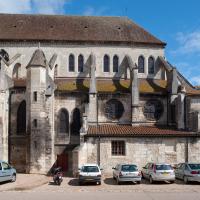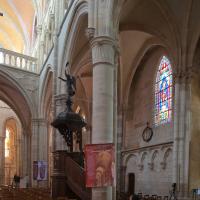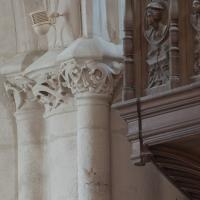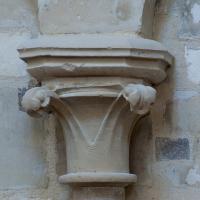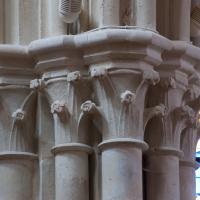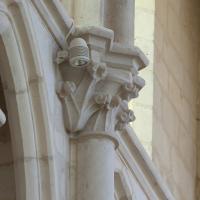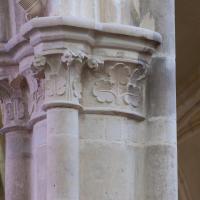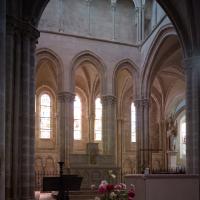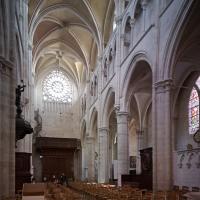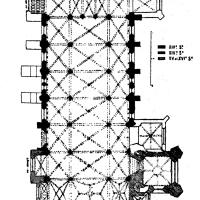Images
VR Tour
Notes
Date
Begun ca. 1215
Plan
This is a deceptively simple box-like seven-bay aisled basilica with no transept and a rectangular east end like Champeaux. One might also draw parallels with Cistercian churches including English examples like Bylands. In the east end the main vessel is terminated by a screen of three arches opening into a kind of ambulatory.
Elevation
One's first impression is of a unifed structure with a three-story elevation throughout. The arcade is quite tall, the wide-open triforium is of the skinny "Burgundian" kind and a low clerestory with passage. Quadripartite vaults. But one is then surprised to find a such a variety of supports: streamlined piliers cantonnés; a modified Soissonais type pier (column with single colonnette toward the aisle).
Chronology
Three bays down into the ambulatory have an older kind of dado with rounded arches. In the main arcade, bases have deeply undercut scotia. A remois passage; en-délit shafts. A variety of piers -- piliers cantonnés transformed by added bridge. Branner considered the start of work as contemporaneous with Auxerre Cathedral, ie. C 1215. Continuing variety of supports in the later bays to the west. Basically alternating: pilier cantonné and the reversed Soissonais type. The third bay from the west has been rebuilt (disappearing mouldings). Capitals in western bays of nave date from around 1300.
Significance
Branner (Burgundian Gothic, 38) names this building together with Auxerre Cathedral as one of the formative structures of Burgundian Gothic: Auxerre is said to be "less pure an example of the Burgundian Gothic style."
Location
Bibliography
Quarré, P., "La collégiale Saint-Martin de Clamecy," Congrès archéologique de France, vol. 125 for 1967, 1970, pp 104-118








